Munich’s dark past as the birthplace of the Nazi party is a sobering history that continues to captivate and educate visitors today. Tracing the party’s rise from its humble beginnings in local beer halls to its ultimate grip on power, a walking tour of the city’s landmarks offers a first-hand look at the chilling factors that allowed extremism to take hold. From the infamous Beer Hall Putsch to the grandiose architecture that reflected the Nazis’ ambitions, each step of the journey sheds light on a complex and unsettling chapter of Germany’s past that nonetheless holds crucial lessons for the present.
Key Points
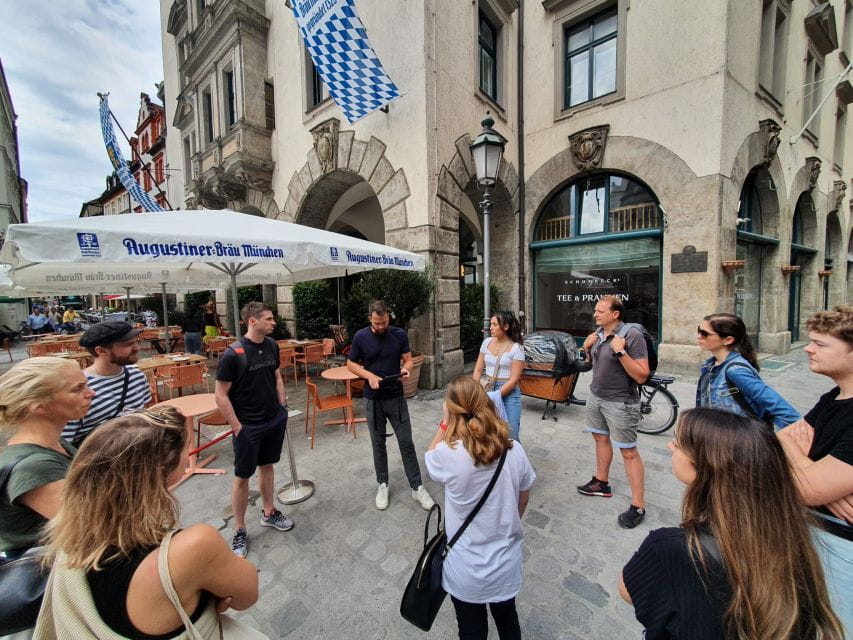
- Trace the origins of the Nazi movement in Munich, where the party gained its initial foothold and Hitler established his stronghold.
- Explore the Beerhall Putsch, a failed Nazi coup attempt in Munich that exposed the party’s radical and violent tendencies.
- Understand how the Nazi party transformed itself into a mainstream political force, capitalizing on the economic and social turmoil in Munich.
- Examine the monuments and buildings in Munich that served as rallying points and symbols of the Nazi regime’s power and influence.
- Reflect on the importance of safeguarding democratic values and the need to educate the public about Munich’s pivotal role in the rise of the Third Reich.
The Birth of the Nazi Movement
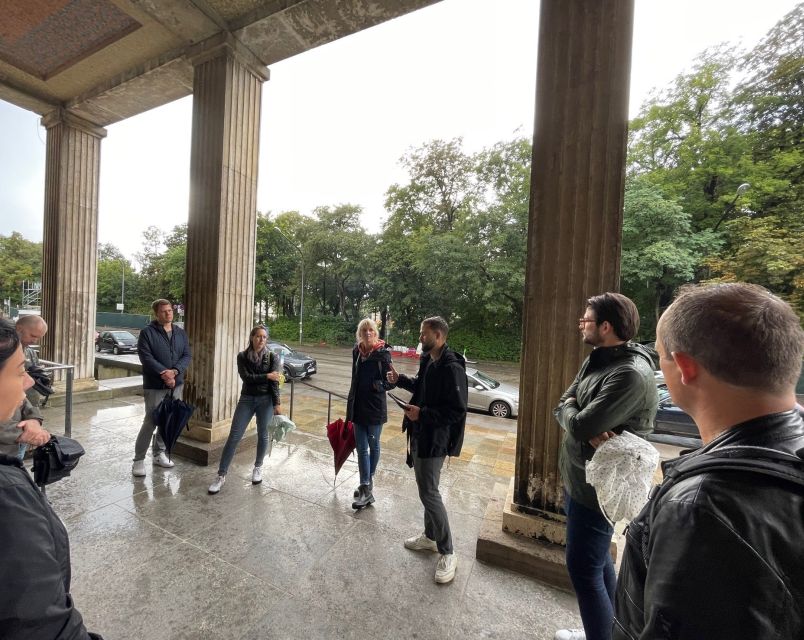
Born in the aftermath of World War I, the Nazi movement emerged from the chaos and turmoil that gripped Germany in the early 20th century.
Fueled by economic despair, nationalism, and a desire for a scapegoat, the party’s radical ideology quickly gained traction among the German populace, setting the stage for its eventual rise to power.
In Munich, the city that served as the birthplace of the Nazi party, the movement’s early meetings and rallies took place, attracting a growing number of followers.
As the Nazis consolidated their power, Munich became a hub of Nazi activity, with the party’s key figures, including Adolf Hitler, establishing their stronghold in the city.
If you're enjoying exploring Munich on foot, you'll love these other walking tours we recommend
The Beerhall Putsch and Its Aftermath
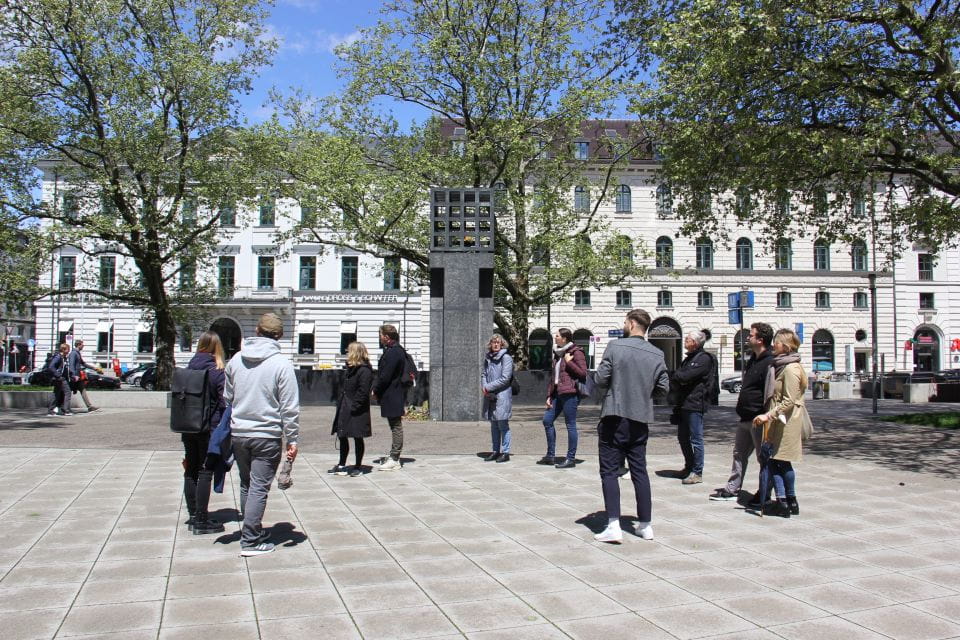
In 1923, the Nazis attempted a failed coup known as the Beerhall Putsch, which resulted in a violent confrontation with the Bavarian authorities and ultimately led to Hitler’s imprisonment. The table below outlines the key events and consequences of this failed uprising:
| Event | Outcome |
|---|---|
| Nazis stormed a beerhall in Munich | 16 Nazis and 4 police officers were killed |
| Hitler and other Nazi leaders were arrested | Hitler was convicted of treason and sentenced to 5 years in prison |
| The Putsch exposed the Nazis’ radical and violent tendencies | It diminished the party’s popularity, but also gave Hitler a platform to promote his ideology |
Despite the Putsch’s failure, it marked a significant turning point in the rise of the Nazi movement, setting the stage for their eventual seizure of power in 1933.
Hitler’s Rise to Power in Munich
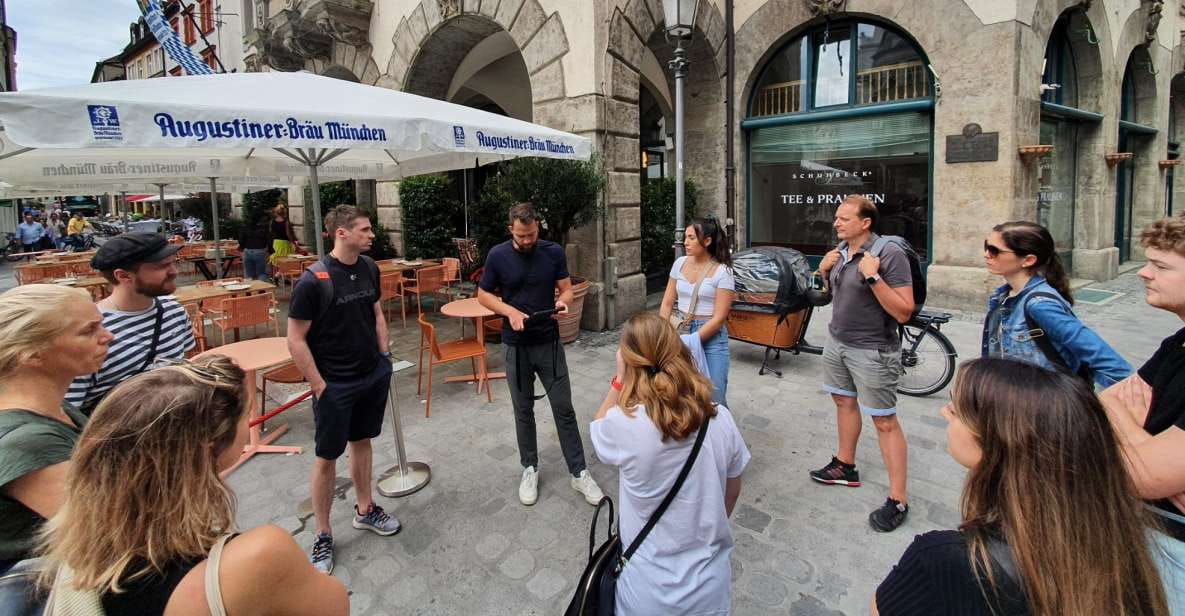
After the failed Beerhall Putsch, Hitler turned his attention to gaining power through legal means. He devised a strategy to transform the Nazi party into a mainstream political force, leveraging his charismatic leadership and the party’s growing popularity in Munich.
The Nazis capitalized on the economic and social turmoil of the Weimar Republic, appealing to Germans’ fear and disillusionment. Hitler skillfully maneuvered the party into positions of power, forming coalitions and exploiting democratic processes.
Monuments of the Nazi Regime
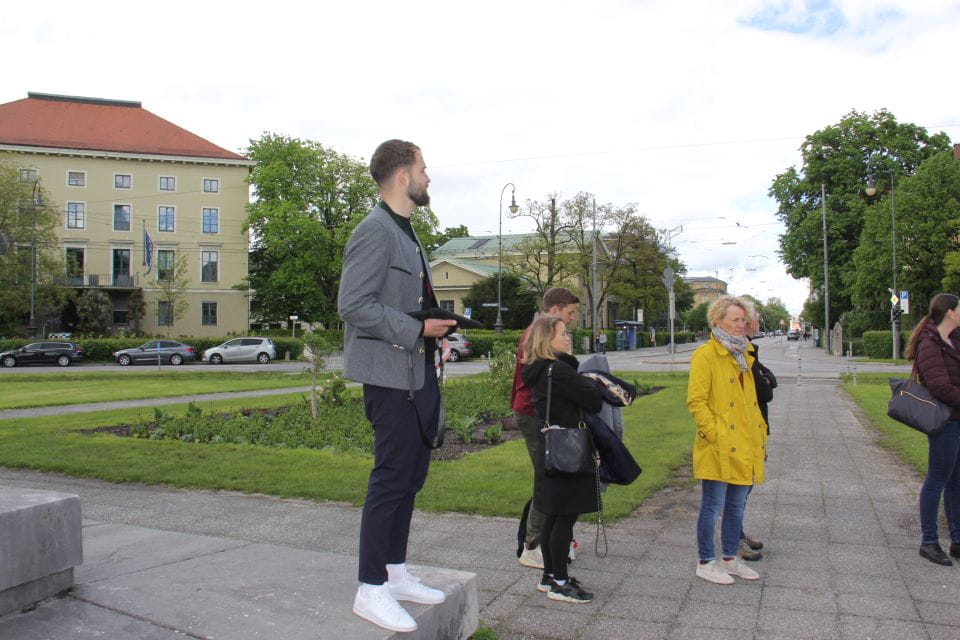
As the Nazis rose to power in Munich, they left an indelible mark on the city’s landscape, erecting monuments and buildings that celebrated their ideology and glorified their regime.
One of the most notable sites is the Königsplatz, a grand neoclassical square that served as a rallying point for Nazi rallies and parades.
The Führerbau, a massive administration building, stood as a symbol of the party’s power and influence.
Nearby, the Temples of Honor commemorate the Nazis’ ‘fallen heroes’ of the infamous 1923 Beer Hall Putsch.
These stark reminders of Munich’s dark past stand as a cautionary tale, urging visitors to reflect on the dangers of unchecked authoritarianism and the importance of safeguarding democratic values.
The Führerbau and the Nazi Party
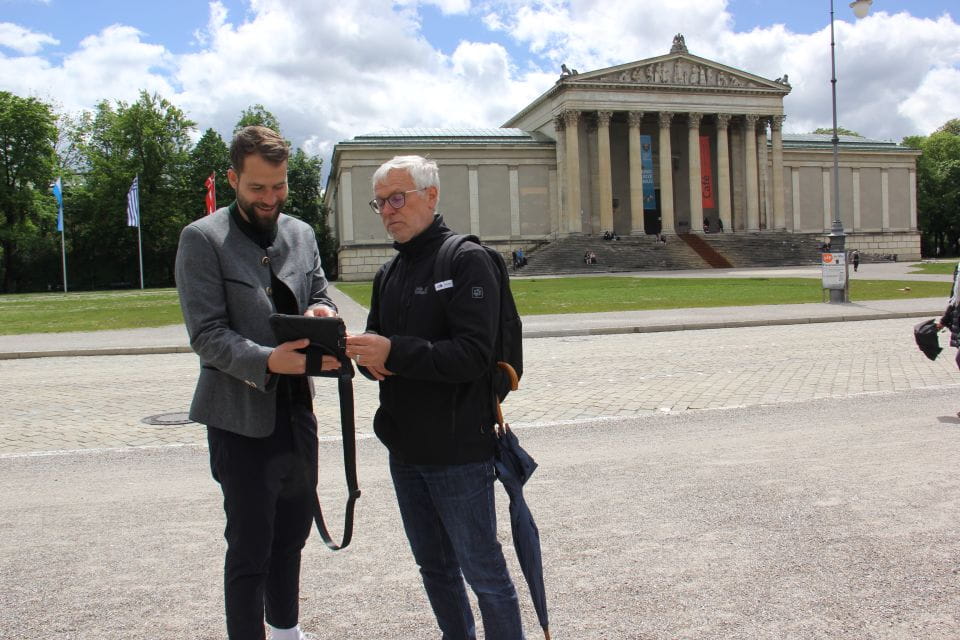
The Führerbau, a massive administration building, stood as a symbol of the Nazi Party‘s growing power and influence in Munich.
This grandiose structure, located in the heart of the city, served as the headquarters for the party and its leader, Adolf Hitler, as they sought to consolidate their control over Germany.
From this building, Hitler and his inner circle directed the party’s activities, planned their rise to power, and orchestrated the events that would lead to the hotel of the Third Reich.
The Führerbau became a hub of Nazi activity, where key decisions were made and the foundations of their totalitarian regime were laid.
It was a tangible representation of the party’s ambition and the dark times that were to come.
Fascinated by Munich's past? More historical tours we've covered
- City Walk + English Garden and Colorful History + Culture in the City Center
- Munich: Historical Walking Tour on the Rise of Hitler
- Munich: Resistance Against Hitler – Historical Walking Tour
- Private Salzburg History & Food Tour With Munich Train Add-On
- Bayern Munich Tour (City, Land, Bazaar, Historical, Taste)
- Private Munich Old Town & Historical City Tour
The March on the Feldherrnhalle

Frequently, Nazi supporters and party members would gather at the Feldherrnhalle, a monument located in the heart of Munich, to demonstrate their allegiance to Adolf Hitler and the National Socialist movement. This site became the stage for one of the most infamous events in the rise of the Nazi regime – the March on the Feldherrnhalle in 1923.
| Date | Participants | Outcome |
|---|---|---|
| November 8, 1923 | Nazi paramilitary forces and civilian supporters | The march was halted by police, resulting in 16 Nazis and 4 police officers killed. Hitler and other Nazi leaders were arrested and charged with treason. |
| Despite the failed uprising, the March on the Feldherrnhalle became a rallying cry for the Nazi Party, solidifying their commitment to seizing power through any means necessary. |
Munich’s Role in the Third Reich
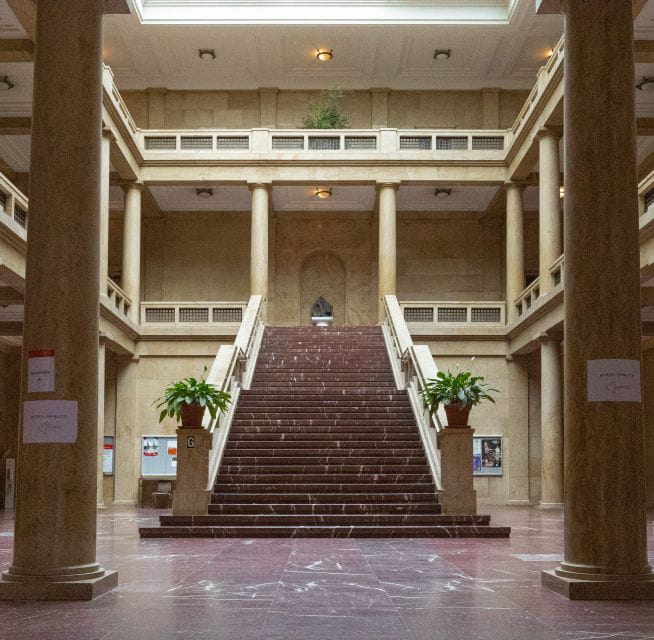
Munich’s central role in the rise of the Nazi party was evident through its status as the birthplace of National Socialism. Here, the new political movement gained momentum, with the city serving as a hub for the party’s earliest activities and public demonstrations.
The Nazis held their first major rally in the city in 1923, and Munich was the scene of the infamous ‘Beer Hall Putsch‘ later that year, an attempted coup that failed but cemented Hitler’s reputation as a charismatic leader.
The city’s architectural landscape also reflected the Nazis’ influence, with the construction of imposing buildings and monuments that symbolized their authoritarian ideology.
Munich’s pivotal role in the Nazi’s ascent to power made it a crucial part of the Third Reich’s origins.
The Legacy of Munich and Nazism
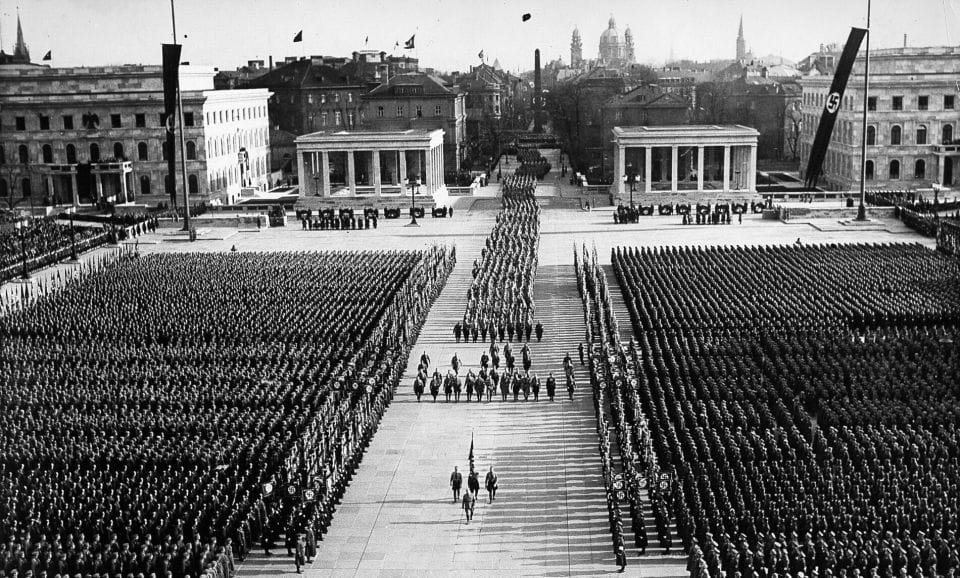
Even today, the shadow of Nazism looms large over Munich, serving as a sobering reminder of the city’s dark past and the dangers of unchecked extremism. The city’s role as the birthplace of the Nazi movement has made it a focal point for those seeking to understand the rise of Adolf Hitler and the horrors of the Third Reich.
The legacy of Munich and Nazism can be seen in:
- The preservation of historical Nazi sites, which serve as a grim testament to the past.
- The ongoing efforts to educate the public about the city’s role in the Nazi’s ascent to power.
- The city’s struggle to reconcile its past with its present-day identity as a modern, cosmopolitan center.
- The debates surrounding the appropriate ways to commemorate and address the city’s Nazi history.
Frequently Asked Questions
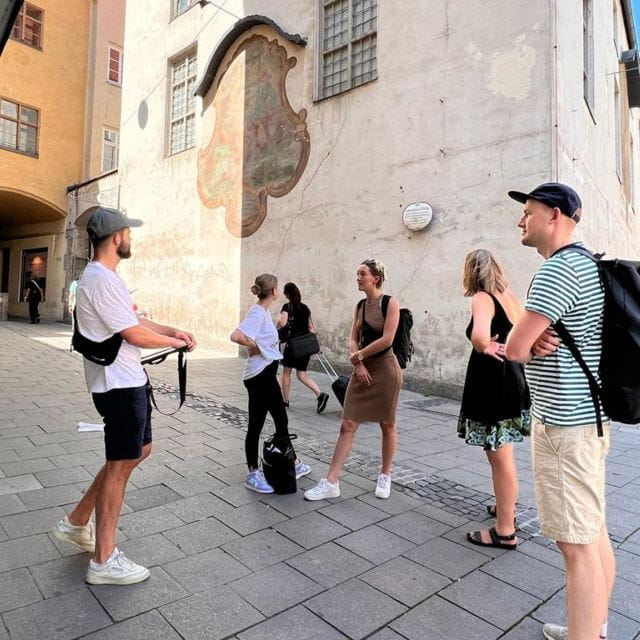
Is the Tour Suitable for People With Disabilities?
The tour is wheelchair accessible, making it suitable for people with disabilities. The details state the tour is wheelchair accessible, so those with mobility challenges can participate in the historical exploration.
Can I Cancel My Booking and Get a Refund?
Yes, the tour offers free cancellation up to 24 hours in advance, allowing you to receive a full refund if you need to change your plans. The booking information clearly states this flexible cancellation policy.
How Can I Pay for the Tour?
To pay for the tour, you can reserve your spot now and pay later. The tour offers flexible booking options, allowing you to secure your place without immediate payment. Simply check availability and complete your reservation.
What Is the Maximum Group Size for the Tour?
The tour’s maximum group size is not specified in the overview. However, it’s a walking tour, so the group size is likely small to allow for an intimate and personalized experience.
Is This Tour Available in Other Languages Besides German?
No, the tour is only offered in German. The description states the "Language: German," so it does not appear to be available in any other languages at this time.
Recap
Munich’s dark past as the birthplace of the Nazi Party serves as a stark reminder of the dangers of unchecked extremism.
The city’s historical sites and monuments bear witness to the party’s rise to power, offering a sobering lesson on the importance of safeguarding democratic values.
The legacy of Munich and Nazism continues to resonate, underscoring the need for vigilance and a commitment to preventing the recurrence of such atrocities.
More Walking Tours in Munich
- Munich Private Guided Walking Tour with Deutsche Museum
- Munich: Walking tour of the old town with all your senses
- Munich: Private Walking Tour Through Munichs Heart
- Munich: Private Walking Tour with good laughs and much info
- Munich: City Highlights and Beer Garden Walking Tour
- Private Munich Old Town and Historical City Walking Tour
More Tours in Munich
- Munich: Mini Classic Bike Tour with Beer Garden Stop at 4 PM
- National Socialism WWII with licensed guide – private tour
- Munich: Dachau Concentration Camp Private Tour by Car
- Munich: Residenz Museum Tickets and 2,5-hour Guided Tour
- Munich and Nazi History Combination Day Tour Small Group
- Private Munich Bike Tour with Beer Garden Lunch Break
More Tour Reviews in Munich
- Munich: Raven Black Witches and Executioners Walking Tour
- Munich: Night PubCrawl Shots and Party!
- Munich: Phototour – Your guide to beautiful photo spots
- Munich: Private or Group Third Reich and WWII Walking Tour
- Munich: Classic Guided City Tour by Bike (English Tour Only)
- Oktoberfest Tour: All in!!! Table reservation with 2 tickets for rides
Not for you? Here's more things to do in Munich we have recnetly reviewed
- Munich: Old Town Highlights Private City Tour – Walking Tour
- Munich Residenz: Master Concert in the Hercules Hall
- Munich: Private Walking Tour Munich Highlights
- Munich: River Surfing in MunichSurfing all you need to know
- Munich: Adventurous Bachelor Party Surf Experience – Munich
- Munich: Private Tour with a Local Guide
- Munich: Highlights Walking Tour with a Guide
- Munich Specials (choose!): OldTown, Dachau, 10Tastes, Spooky
- Munich: Wheelchair Rickshaw Tour through the English Garden
- Third Reich: Art, Cult and Ideology behind the tragedy
- Munich: Private Highlights Tour by Car – Private Tour Guide
- Secret Food Tours Munich
